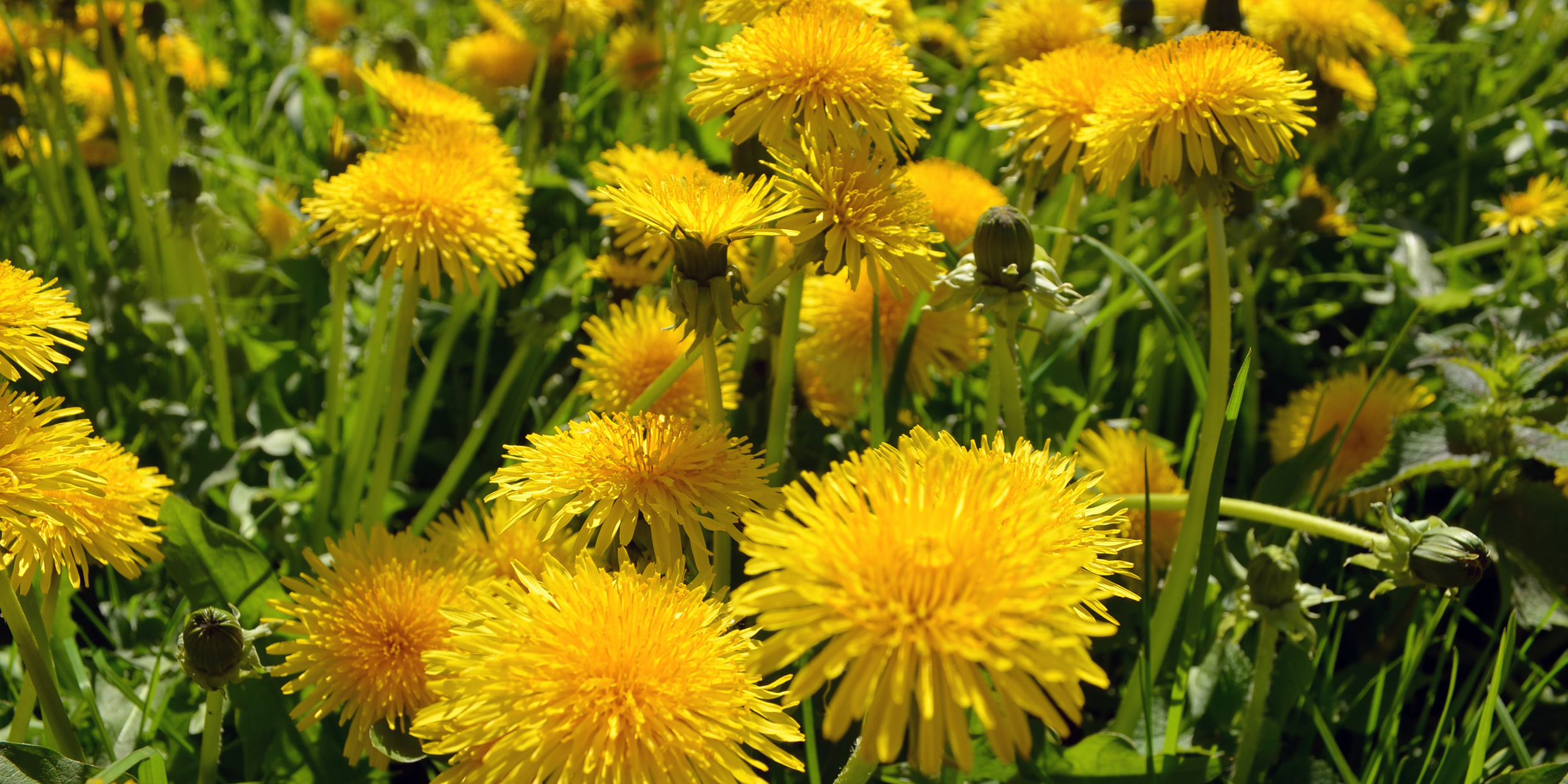Originally published 17 July 1993
“Momma had a baby and the head popped off.”
Remember the childhood chant? The dandelion caught between finger and thumb. The flick of the thumb. The yellow flowerhead sent flying?
Ah, talk about the flower of youth. What would kids have done without dandelions?
Remember dandelion clocks? Blowing at dandelion flowers that had gone to seed? The number of breaths it took to blow away all the parachutes was the time of day.
In another variation, the number of breaths was the number of kids you would have when you grew up.
And — how deliciously diabolical! — dandelion radar. You asked an unsuspecting friend to hide a piece of dandelion stem on her person. The dandelion radar — a downy puffball — would find it.
“Radar says it’s in your mouth.”
“Nope.”
“Radar says it’s in your mouth.”
“Nope.”
“Come on, I’m sure of it. Radar says it’s in your mouth.”
“No, see!”
Mouth opens. In goes puffball. A gagging mouthful of parachutes. Run for your life.
What mother of yesteryear did not relish receiving a dandelion bouquet from a child? What child of yesteryear did not make dandelion chains, or dandelion wreaths to celebrate make-believe nuptials?
The plant with crayon-yellow flower. Popsicle-sticky sap. Puffable parachutes. Dandelions were pickable. Dandelions were plentiful. Dandelions were available for summer games all summer long.
Gone now, replaced by the lawn care trucks that cruise up and down the smooth, wide drives of our manicured suburbs. Gleaming tankers of broad-leaf herbicides. Chemistry’s contribution to the de-dandelionification of our lawns. Chemistry’s contribution to the de-dandelionification of childhood.
Dandelion. The name is a corruption of the French dent de lion, “tooth of the lion.” Most dictionaries say the name refers to the jagged leaves of the plant, which look like a lion’s teeth. Other sources say the yellow flowers resemble the golden teeth of heraldic lions on French shields and flags. If you asked me, I would point to the deep taproot of the plant, as difficult to remove from a lawn as to extract a tooth from a lion.
Like rats and starlings, dandelions follow wherever humans disrupt natural ecological systems. Lawns are the biggest disruption of all, left-over from a class system in which rich folks planted lawns to make obvious the extent of their property holdings. We create these biological abominations and then complain when an opportunistic species like dandelions take over.
Then we call in the chemical sprays.
The cure is worse than the disease. Yes, we are rid of the yellow scourge, but in dousing our landscape with chemicals we also rid ourselves of garden snakes, spring peepers, glowworms (lightnin’ bugs, we called them in Tennessee), ladybugs, toads, frogs and frog’s eggs, salamanders, bluebirds, cicadas and their ghostly molted bug-like skins, and other important parts of a child’s natural universe.
So what do we do when the mano-a-mano war with dandelions goes against us? Maybe the answer is to give up the lawn.
Sara Stein, a gardener from Pound Ridge, New York, suggests exactly this in a delightful book called Noah’s Garden: Restoring the Ecology of Our Own Backyards (Houghton-Mifflin, 1993).
Stein and her husband bought six acres of land in the stage of regrowth from abandoned pasture to forest. It was covered with brambles, bushes, vines, and grasses that supported a large and varied animal and plant population, including, presumably, a few dandelions. They set about clearing brush, pulling vines, disposing of deadwood, and scouring the pond of debris. They spent a decade creating lawns and formal gardens that seemed like Eden.
Then it hit. They realized they had banished animals from their paradise. It was an artificial paradise, sterile and silent. Gone were the orioles, purple martins, meadowlarks, bluebirds, box turtles, walking sticks, praying mantises, monarch butterflies, luna moths, red spotted salamanders, green grass snakes, little brown bats, weasels, and all the other creatures that had flourished upon the land before its transformation.
So Stein and her husband set about undoing what they had done, and learned how to create a kind of natural suburbia where humans and indigenous wildlife can coexist, a suburbia of wild grasses, rock gardens, hedgerows, woodlands, and mini-lawns.
Dandelions may find a niche in Sara Stein’s “restored” landscape, but in numbers sufficiently small that the summer games of children, rather than chemical herbicides, will keep them under control.



